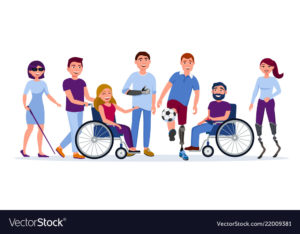
By Kay Morgan-Gurr
There are not many people whose job title is ‘evangelist’ today, especially compared to twenty or thirty years ago. You see even fewer children’s evangelists, and even less who work evangelistically with those who have disabilities and additional needs.
I often wonder why.
Why are churches more likely to employ a worship leader than an evangelist?
The answer, I think, can often depend on the ‘flavour’ of a church and it’s perceived specialism in the world of faith. Some specialise in teaching and preaching, others in worship, youth work or ministry amongst students. There are some who would say evangelism is a key part of their mission, but children are not in their mission plan, and neither are those with additional needs and disabilities.
For disabled people, most ‘evangelism’ comprises scouring the streets for those who are visibly disabled and asking if they want prayer for healing. Aside from being offensive, this usually alienates and leaves the person feeling they can only come to God if they don’t have a disability.
Ask people what evangelism is today and you will hear many different answers – how we practice evangelism has changed hugely. There are times when we still proclaim the Gospel, often preceded by a clever question or topical subject designed to catch attention, or even a great meal!
We also have Alpha and Christianity Explored that allow faith to slowly come to fruition as those who attend question and learn in a safe place. Thankfully there is a learning disability friendly version of Alpha called ‘Access to Life in Jesus’ available from Livability.
Many churches now appear to prefer the pre-evangelism and friendship evangelism models.
I hear from many children and family ministers that they do pre-evangelism, introducing families to church or God in a general sense. There is often a belief that proselytising is a step too far and may offend. The notion of forcing faith seems even more prominent when any of those children or their families have additional needs, because they are seen as too ‘impressionable’.
I understand that thinking. But does there comes a time where we have to give people, of any age or ability, the chance to respond to the Gospel?
However, you view of evangelism, there are a few things it isn’t. One is, saying put your hand up if you want to follow Jesus. The other is pressurising people either through bullying or emotion.
The numbers game can be an issue too – saying “all my group became Christians tonight”, or “we had 100 people come forward for prayer” feels like kudos seeking. Don’t count, only the Holy Spirit knows. And don’t be the leader or parent who measures spiritual success in this way.
But for those with disabilities and additional needs, there’s no numbers game, and yet this is the largest unreached people group in the world. The percentage is 94% unreached with the Gospel. Add to that the many rejected by the church in oh so many ways who walked or rolled away from faith as a result.
Let’s look at how we do evangelism and the accessibility of it. I’ll just pick outreach to students as an example because that appears to be one of the largest areas of growth in evangelism at the moment.
Some 13.2% of all students will have some form of disability – that’s no small number. How accessible are these evangelistic events? I don’t just mean step free access.
A huge amount of literature for student evangelism presumes the ability to read, and so do the post-event mentoring resources. Most presentations require the ability to hear – when many will need a hearing loop, a BSL interpreter or just plain subtitles on the videos we use.
Sometimes that simple, loving act of welcome in the access provision will speak louder than any of our fancy presentations.
And what about the Christian Unions? How many of the resources, the worship and the talks require the ability to see, hear and move around, to cope with a litany of noise and overstimulation, to stand up and sit down with the request to do so delivered more like a demand.
For evangelism in general, we Evangelicals seem to love giving a free booklet away for people to read. As a person with a visual impairment, when I’m offered a free book I often say: “I can’t read it, do you have an accessible format?” Nine out of ten times, the answer is no.
So how do you ‘do’ evangelism with disabled people?
You get to know disabled people, and not just because you want to convert them. Have disabled evangelists as part of your teams. Stop seeing disabled people as a project for healing or prayer.
Ask questions of other disabled people on what you can do. Listen to them, and don’t ‘able-splain’ why it’s impossible (Yes, I get that all the time – speaking as one evangelist to another). Disabled people have been told for years that it’s impossible to livestream services to help support them, and look at what we’re doing now!
Create a place where anyone, regardless of ability, can belong and be able to say without judgement when access isn’t working.
Don’t forget us, and remember – nothing about us without us.
Kay Morgan-Gurr is Chair of Children Matter and Co-Founder of the Additional Needs Alliance, part of the Evangelical Alliance Council.


